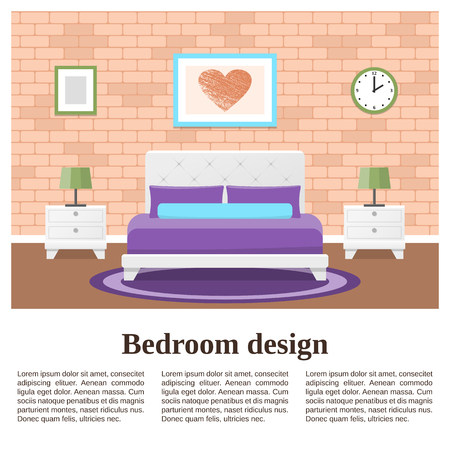Introduction: Transforming Small Bedrooms with Texture
When it comes to small bedroom design, one of the most effective ways to create a sense of luxury and comfort is through the thoughtful use of texture. In compact spaces, where square footage is limited and every detail counts, texture becomes a powerful tool for adding depth, warmth, and visual interest. By incorporating a variety of materials—plush textiles, natural fibers, sleek metals, and layered finishes—you can transform even the tiniest bedroom into a stylish retreat that feels both inviting and upscale. This article explores how strategic choices in texture can elevate your small bedroom, making it not only functional but also a place where you truly love to spend time.
2. Why Texture Matters in Small Spaces
Texture plays a pivotal role in small bedroom design by influencing both the psychological and visual experience of a space. In compact rooms, where floor area is limited, every design element must pull its weight—this is where texture becomes essential. Not only does it add visual interest, but it also creates depth and dimension without the need for additional furniture or décor that might clutter the room. The right textures can transform a small bedroom from feeling cramped and uninspired to feeling cozy, inviting, and even luxurious.
On a psychological level, different textures evoke specific feelings. For instance, soft textiles like plush throws and velvet cushions contribute to a sense of comfort and warmth, making the room feel like a retreat. Smooth surfaces such as glass or polished wood can inject a touch of sophistication, while woven baskets or chunky knits introduce an organic, grounded vibe. The tactile variation encourages relaxation and helps personalize the space, ensuring it feels uniquely yours rather than generic or boxy.
Visually, texture manipulates how we perceive space. By layering contrasting materials—think sleek metallic lamps against a nubby wool rug—you create focal points that draw the eye around the room, making it appear larger than it actually is. Strategic use of texture can also bounce light in interesting ways or absorb excess brightness, helping you set the perfect mood no matter the time of day.
Psychological & Visual Impacts of Texture
| Texture Type | Psychological Effect | Visual Impact |
|---|---|---|
| Plush Fabrics (Velvet, Faux Fur) | Comforting, Luxurious | Adds warmth and depth; softens sharp edges |
| Smooth Surfaces (Glass, Lacquer) | Modern, Clean | Reflects light; opens up small spaces |
| Natural Elements (Wood, Rattan) | Grounding, Relaxed | Introduces organic patterns; breaks monotony |
| Textured Walls (Wallpaper, Paneling) | Dynamic, Inviting | Adds visual complexity without bulk |
The Essential Factor for Cozy Sophistication
Ultimately, texture is not just a decorative afterthought—it’s fundamental to making small bedrooms feel both welcoming and refined. By thoughtfully integrating varied textures into your compact space, you can achieve an environment that balances coziness with sophistication, all while maximizing every inch.

3. Key Textural Elements to Incorporate
When it comes to making a small bedroom feel both comfortable and luxurious, choosing the right textural elements is essential. Plush bedding is often the centerpiece of any cozy bedroom—think high-thread-count cotton sheets, velvet duvets, or quilted comforters that invite relaxation. These soft layers add immediate warmth and visual interest without overwhelming limited space.
Another standout element is the tactile rug. Even in a compact room, a well-chosen area rug can define the sleeping zone and create a sense of softness underfoot. Opt for materials like shag, faux fur, or wool blends in subtle patterns or neutral tones that visually expand the space while providing comfort.
Don’t underestimate the power of layered fabrics. Mixing throw blankets in different textures—such as knitted throws, linen coverlets, or silk accent pillows—adds depth and richness. Layering these pieces on your bed or a reading nook instantly elevates the ambiance and makes even the smallest room feel indulgent.
By thoughtfully incorporating plush bedding, tactile rugs, and layered fabrics, you can transform your small bedroom into a luxurious retreat that feels inviting and sophisticated, all while maximizing every inch of available space.
4. Balancing Textures: Mixing Hard and Soft Surfaces
When designing a small bedroom, achieving the right balance between hard and soft textures is key to creating a space that feels both inviting and upscale without feeling cluttered. By thoughtfully combining materials like wood, metals, velvets, and natural fibers, you can add layers of interest while keeping the room harmonious and visually open.
Mixing Textures Without Overwhelming the Space
Start by choosing one or two dominant textures to anchor your design—such as a sleek wooden headboard or a plush velvet comforter. Then, layer in contrasting elements in smaller doses. For example, pair metal bedside lamps with a woven jute rug or incorporate linen throw pillows on a leather chair. The goal is to create tactile variety without letting any single texture dominate.
Practical Tips for Combining Textures
- Limit Your Palette: Stick to a cohesive color scheme so your mix of textures feels curated rather than chaotic.
- Vary Texture Scale: Combine large, smooth surfaces (like painted walls) with smaller, more detailed textures (like knitted throws or ribbed cushions).
- Highlight Key Features: Use bold textures on focal points, such as an upholstered headboard or an accent wall, and keep surrounding areas more subdued.
- Add Natural Elements: Incorporate organic materials like cotton bedding, rattan baskets, or reclaimed wood for warmth and authenticity.
Texture Combinations at a Glance
| Main Texture | Suggested Pairings | Effect |
|---|---|---|
| Wood | Linen bedding, metal lamps, wool rug | Warmth & grounded elegance |
| Metal | Velvet cushions, woven baskets | Sophisticated contrast |
| Velvet | Cotton sheets, light woods | Luxe softness without heaviness |
| Natural Fibers | Ceramic decor, leather chair | Organic feel & subtle richness |
The secret to luxury in compact bedrooms lies in restraint and thoughtful curation. By mixing hard and soft surfaces strategically and keeping the palette controlled, you’ll elevate your small bedroom’s ambiance while ensuring it remains comfortable and serene for everyday living.
5. Using Texture to Create Visual Interest and Depth
In a small bedroom, it’s easy for the space to feel flat or uninspired, but thoughtful use of texture can instantly transform the atmosphere. By strategically placing textured elements, you can add both visual interest and a sense of depth—key ingredients in creating a luxurious retreat, no matter the square footage.
Feature Walls: The Power Statement
A feature wall is an excellent way to introduce bold texture without overwhelming your compact bedroom. Consider options like grasscloth wallpaper, 3D wall panels, or reclaimed wood planks to create a tactile focal point. These materials not only break up monotony but also draw the eye, making the room appear larger and more inviting.
Statement Pillows: Small Details, Big Impact
Never underestimate the power of decorative pillows with rich textures. Think velvet, faux fur, or intricate embroidery—these accents deliver a plush, high-end vibe without taking up precious floor space. Mixing different pillow textures on your bed adds layers and keeps the look dynamic yet cohesive.
Textured Throws: Functional and Stylish
Drape a chunky knit blanket or a woven throw at the end of your bed for instant warmth and sophistication. Not only do these pieces provide physical comfort, but they also create a visually appealing contrast against crisp sheets or smooth bedding. Choose throws in colors that complement your palette to enhance the sense of luxury and unity.
Ultimately, combining these textured elements helps even the smallest bedrooms feel curated and indulgent. With just a few thoughtful additions—a standout wall, lush pillows, and cozy throws—you can elevate your compact space into a sanctuary that feels both spacious and undeniably luxe.
6. Bringing It Together: Texture in American Small Bedroom Design
When it comes to making a compact bedroom feel luxurious, texture is your secret weapon. For American homes, where comfort and practicality are essential, blending tactile elements with popular design trends can elevate even the smallest spaces. Consider the current popularity of farmhouse, boho-chic, and modern minimalism: each style incorporates texture differently but effectively. For example, you can pair a classic white comforter with a chunky knit throw and woven rattan baskets for a cozy farmhouse vibe. In boho-inspired rooms, layer patterned rugs and macramé wall hangings alongside velvet pillows to add depth and warmth. If you lean towards modern minimalism, opt for sleek bedding in matte cotton or linen and introduce subtle interest through a single textured accent chair or a sculptural bedside lamp. Regardless of your preferred style, always balance functionality with aesthetics—choose machine-washable fabrics for ease of care and opt for multi-purpose pieces like upholstered storage benches. By thoughtfully mixing soft, smooth, rough, and plush textures, you create a sensory-rich environment that feels inviting and high-end while maximizing every inch of your small bedroom.

